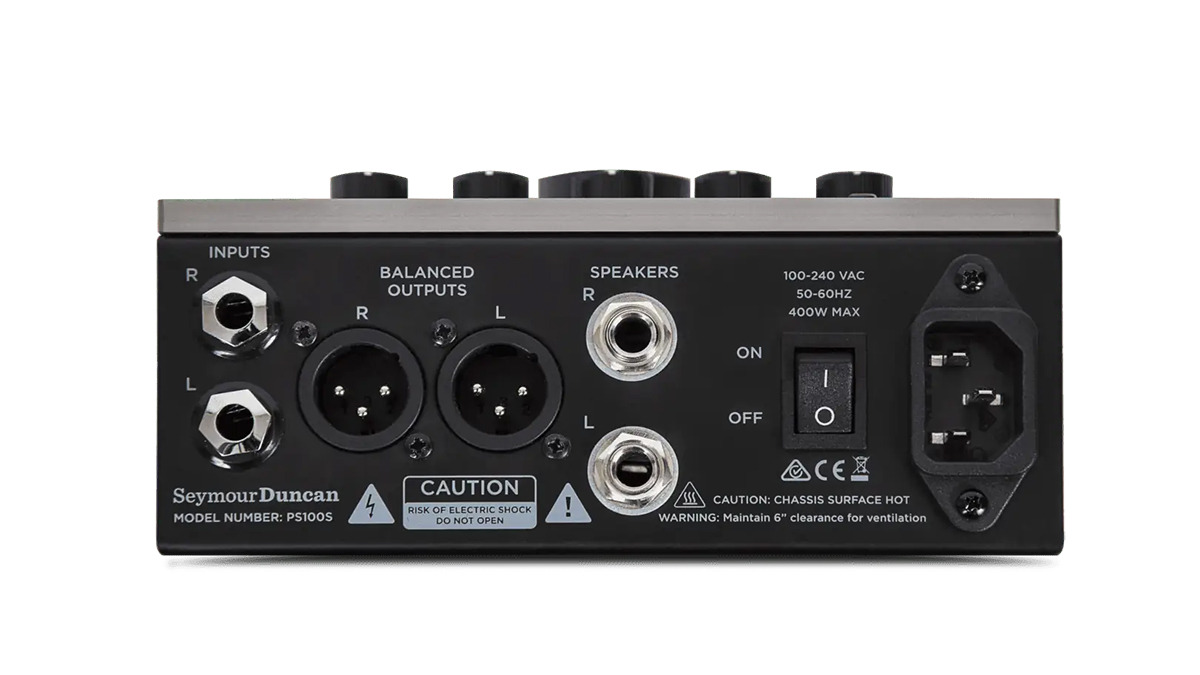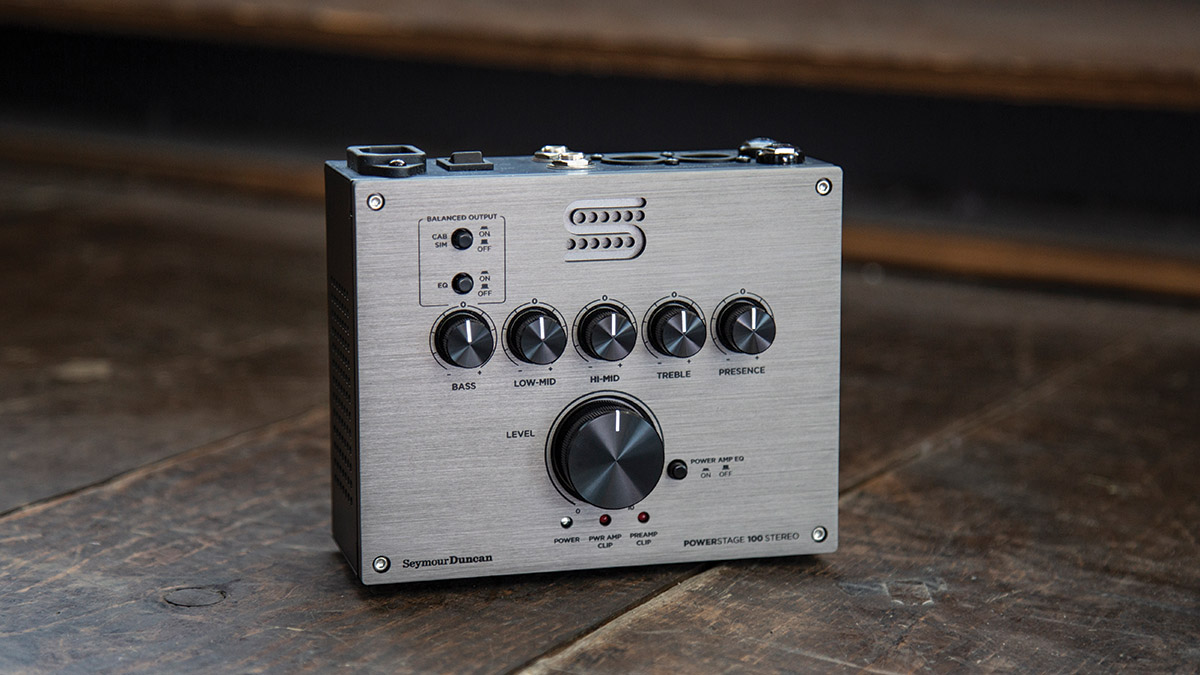Guitar World Verdict
The Seymour Duncan PowerStage 100 Stereo is a truly pedalboard-friendly power amp that’s ideal for any guitarist who wants to use stereo modelers and/or effects or configure a wet/dry/wet rig that doesn’t require unwieldy racks and delivers pristine sound quality.
Pros
- +
Compact pedalboard-friendly design.
- +
Stereo guitar inputs, speaker outputs and balanced XLR outputs.
- +
Cab simulation.
- +
Powerful 5-band EQ section individually switchable for speaker and balanced outputs.
Cons
- -
Some users may prefer more power output.
- -
Cabinet simulator provides only one cab tone.
You can trust Guitar World
Guitarists interested in building a custom stereo rig based on preamps and/or modeling devices or who would like to explore using a wet/dry/wet setup often reconsider once they realize they’ll probably need a separate power amp.
This is because they’re afraid that their rig will grow into an unwieldy monster, requiring refrigerator-sized racks, a dedicated tech to load and set it up and a van to haul everything around.
The Seymour Duncan PowerStage 100 Stereo offers a very attractive compact alternative to a conventional power amp. Measuring only about 6-1/4 x 5 x 2-1/2 inches, it’s small enough to fit on a pedalboard, yet its performance is comparable to a full-size rack unit.
Even better, it provides features like a comprehensive EQ section, cab simulation on/off switch, two ¼-inch input jacks (left and right) and two ¼-inch speaker outputs that are targeted specifically at guitarists’ needs. With 100 watts of output power per channel at 4 ohms/1% THD (or 50 watts at 8 ohms/1% THD), the PowerStage 100 Stereo offers impressive power for its small footprint.

The EQ section consists of active Bass (74Hz), Low-Mid (389Hz), Hi-Mid (1.55kHz), Treble (4.6kHz) and Presence (11.0kHz) controls with 13.2 to 13.6dB of boost or cut. This EQ section can be individually engaged or disengaged for the speaker and XLR balanced line outputs.
For example, you could engage EQ for the stage speakers only while sending a non-EQ signal to the house sound system or vice versa. The Cab Sim switch engages built-in cabinet simulation for the balanced line outputs only.
The large output level control is front and center for quick adjustments assisted by separate power amp and preamp clip LED indicators. A small, quiet fan keeps the amp from overheating.
I used the PowerStage 100 Stereo to configure my dream compact wet/dry/wet rig with a Friedman Pink Taco head, Suhr Reactive Load box, Boss SDE-3000EVH delay and three 1x12 cabinets. I also tried it with a Fractal Axe-Fx III and a pair of 4x12 cabinets along with a direct XLR recording feed to a computer.
The power amp’s sound quality with both rigs was pristine with warmth and definition dialed in for guitar tones, and the output level was more than loud enough for club stages. If you need a stereo amp with more output, Seymour Duncan also offers the PowerStage 700, but it only has 3-band EQ and comes in a rackmount configuration.
The amp’s True Cab Circuitry delivers attractive guitar speaker cabinet tone, but some players may prefer the greater variety of an external cab simulator.
Specs
- PRICE: $599 / £649
- TYPE: Class D stereo power amplifier w/cab sim
- OUTPUT: 100 Watts per Channel at 4 Ohms
- CONTROLS: Balanced output Cab sim on/off, Balanced output EQ on/off, Bass, Low-mid, Hi-mid, Treble, Presence, Level, Power amp EQ on/off
- CONNECTIONS: 2x 1/4" inputs, 2x balanced XLR outputs, 2x 1/4" outputs
- CONTACT: Seymour Duncan
Chris is the co-author of Eruption - Conversations with Eddie Van Halen. He is a 40-year music industry veteran who started at Boardwalk Entertainment (Joan Jett, Night Ranger) and Roland US before becoming a guitar journalist in 1991. He has interviewed more than 600 artists, written more than 1,400 product reviews and contributed to Jeff Beck’s Beck 01: Hot Rods and Rock & Roll and Eric Clapton’s Six String Stories.
“When I first heard his voice in my headphones, there was that moment of, ‘My God! I’m recording with David Bowie!’” Bassist Tim Lefebvre on the making of David Bowie's Lazarus
“A new signature for Misha Mansoor, but not the one we’ve been waiting for”: The essential guitar gear releases you might have missed this week, from Chase Bliss and PRS to Jackson and Fender
“I said, ‘Let’s get Hendrix to play on it.’ His manager said, ‘Jimi’s playing shows back-to-back.’ So we got Jimmy Page”: The hit ’60s single that was supposed to feature Jimi Hendrix… but ended up with Jimmy Page












